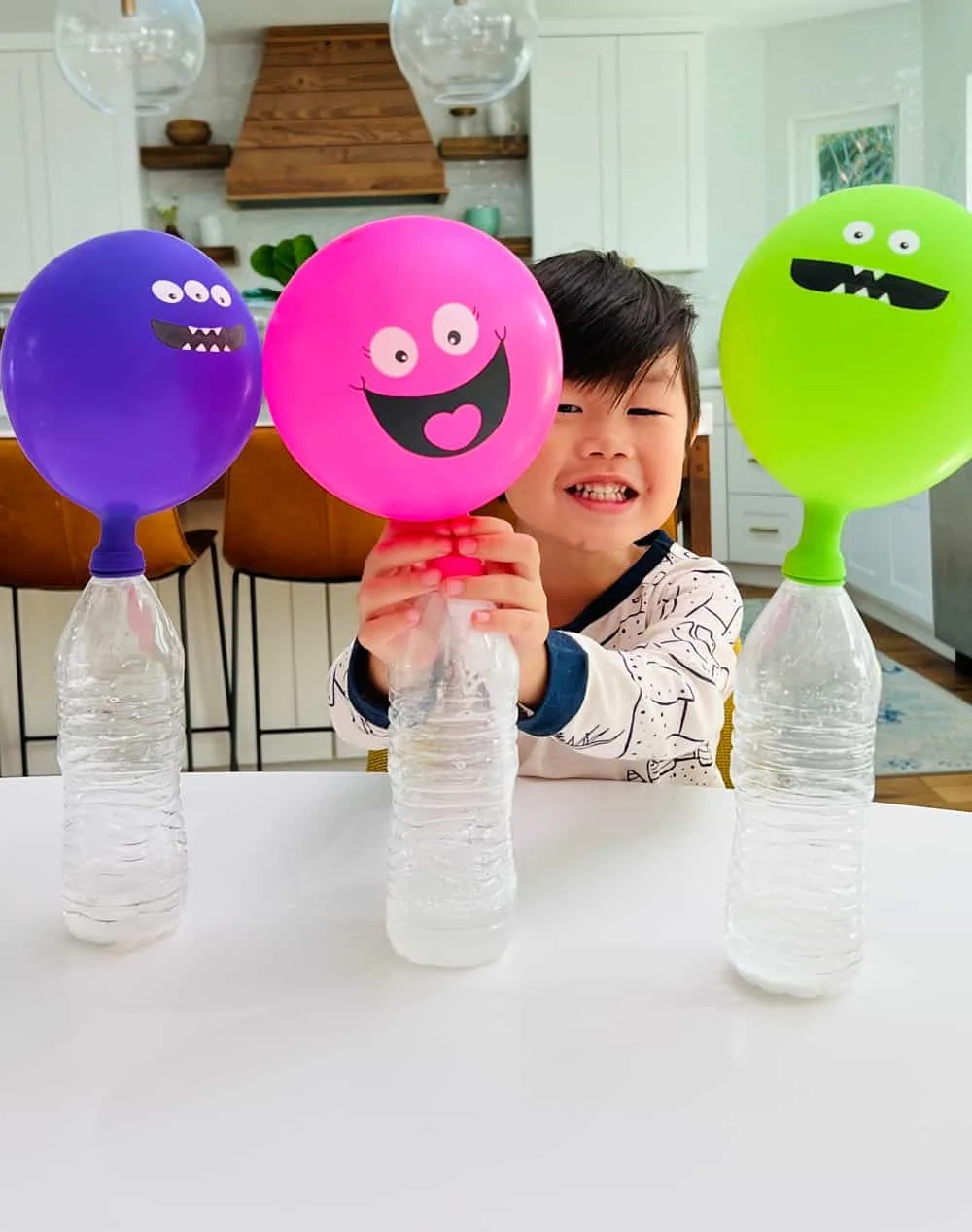
By using this site, you agree to our Terms of Use. This post may contain affiliate links. Read our disclosure policy.
Follow us on Instagram for more fun ideas for kids!
Monster balloons are a fun Halloween science experiment for kids using just baking soda and vinegar!
It’s that time of year again when the leaves are changing, the air is getting colder, and monsters are starting to appear!
This Halloween, try some fun and spooky science experiments with your kids. They’re sure to have a blast, and who knows, they might even learn something!
In this post, we’ll show you how to create a monster balloon using vinegar and baking soda. You will love seeing the reaction between these two ingredients.
Plus, your kids will have a blast creating their own monsters! All you need is a few simple ingredients, some basic kitchen supplies, and a little imagination.
If you’ve never done this experiment before, you’re in for a real treat! it’s easy, it’s fun, and it’s downright magical. So gather your supplies and let’s get started!
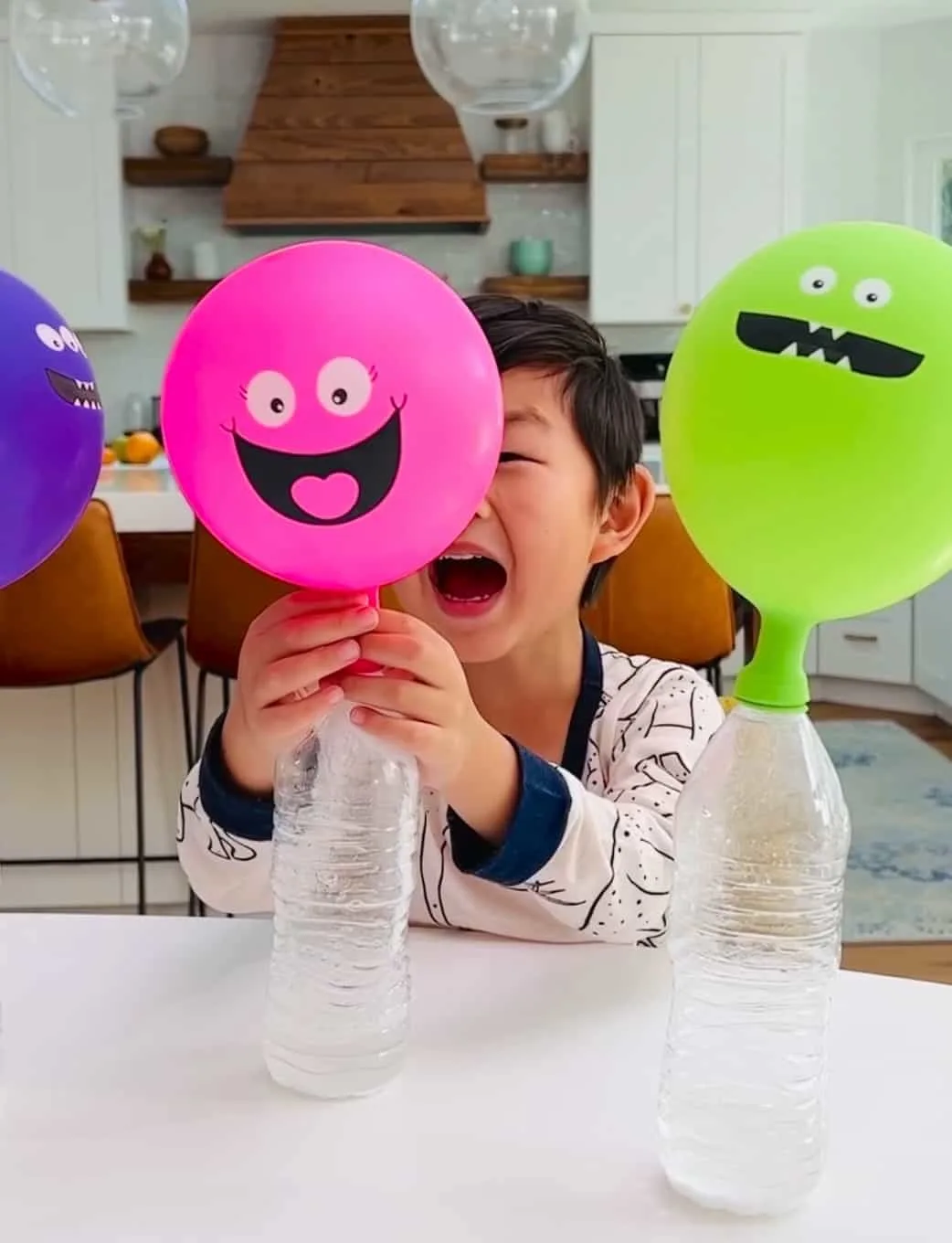
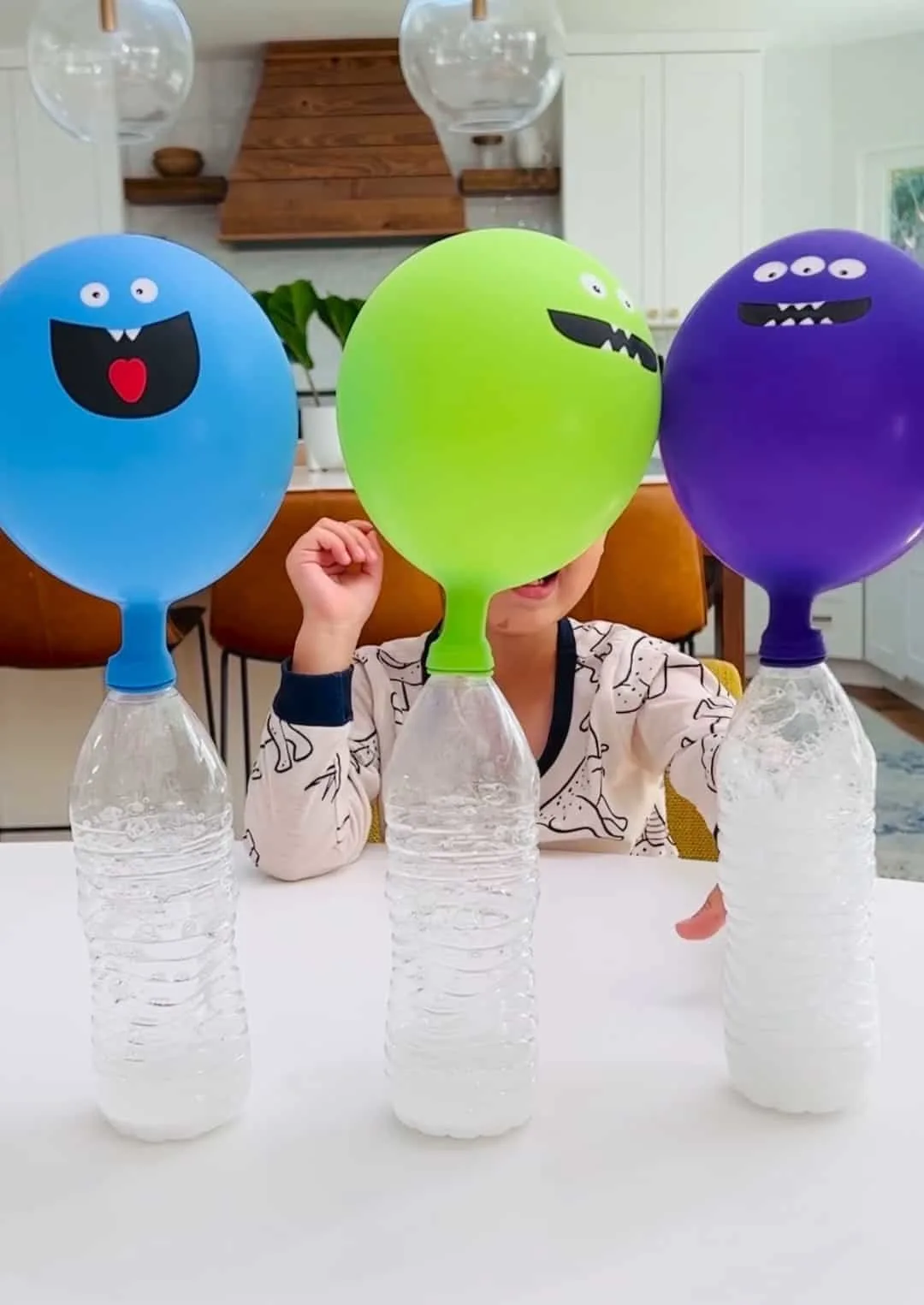
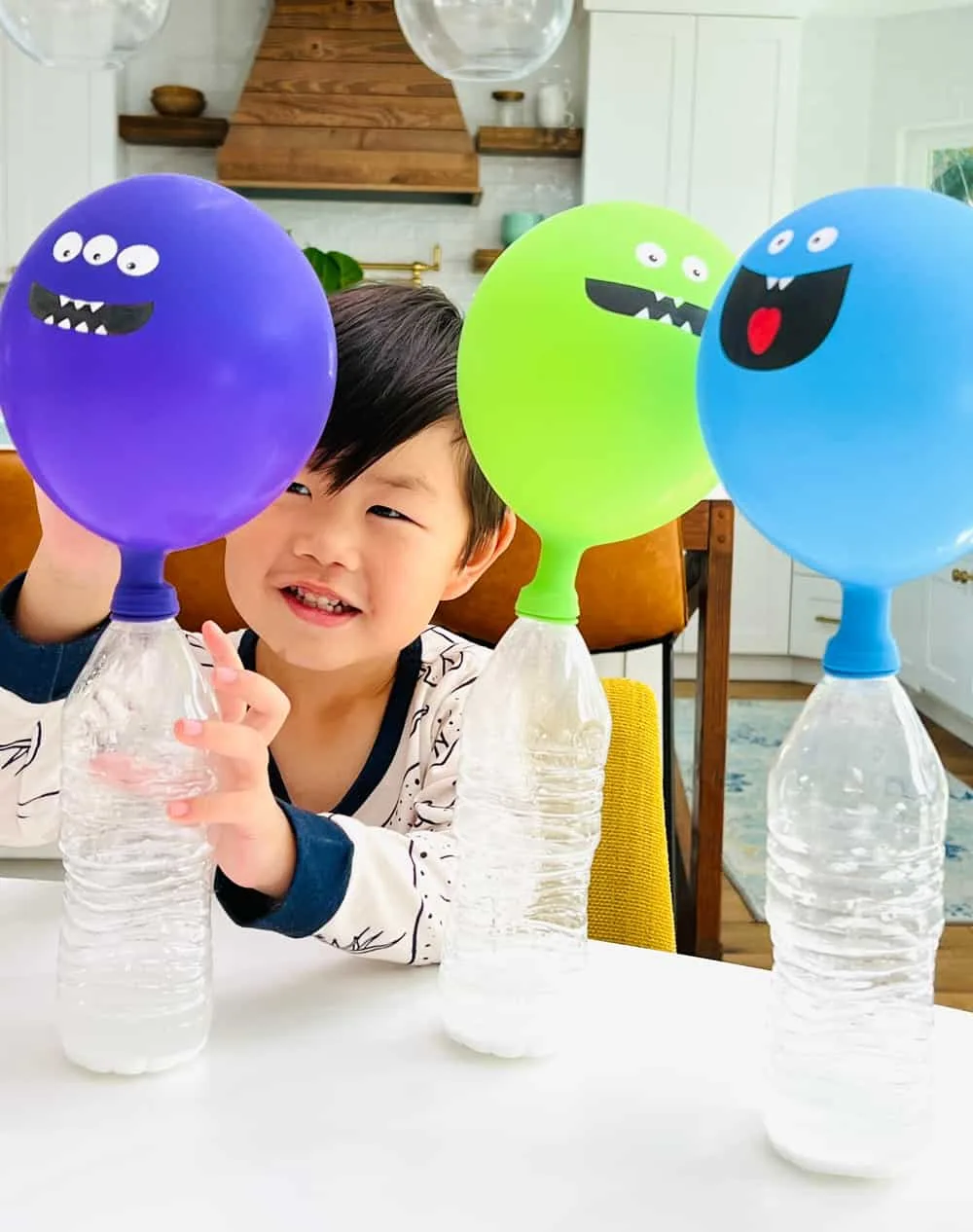
The Science Behind the Monster Balloon Experiment
Halloween buffs know that the best part of Halloween is to do spooky science experiments. Formerly, we created something similar to this monster balloon, but with giant balloons!
The key to this experiment is getting vinegar and baking soda to react chemically. Carbon dioxide is a gas that is produced when these two substances are combined.
The balloon starts to inflate as the gas in the bottle starts to expand. The balloon will expand to a larger size as more gas is produced.
Of course, part of the fun of this experiment is watching the balloon grow to an impressive size.
But it’s also interesting to note that this same chemical reaction can be used to power everything from rockets to submarines.
Halloween Balloon Science Experiment – What You’ll Need:
- Vinegar
- Baking soda
- Funnel
- Empty Clean Water bottle
- Balloon(s) with monster faces
How to Make a Monster Vinegar Baking Soda Balloon
Step 1: Pour in Vinegar and Baking Soda
To start, pour 1/4th of a cup of vinegar into a 16oz water bottle. Then, place the funnel in the opening of the balloon and add 2 tablespoons of baking soda inside it.
Carefully stretch the opening of the balloon over the neck of the water bottle, being careful not to spill any baking soda inside just yet.
You may want to use disposable gloves to avoid getting the baking soda and vinegar on your hands. This can cause irritation. Gloves can act as a substitute for balloons as well!
Step 2: Combine the Two Ingredients
Lift the balloon so that all of the baking soda falls into the vinegar. Stand back and watch as your balloon inflates and takes on a life of its own!
If using disposable gloves or plain balloons, you draw additional features onto your “monster” using a permanent marker before adding baking soda. We had some balloons around already with faces on them so just used what we had!
While this experiment is safe, you may want to do it in an area that is easy to clean in case of any spills. Just in case, it’s always good to have some paper towels or a wet rag handy.
Step 3: Remove the Balloon or Keep it Attached
Once the reaction has slowed down, you can choose to carefully remove the balloon from the water bottle, or keep it attached.
If you remove the balloon, do this over a trash bin so the residual baking soda that didn’t release from the balloon can be thrown away easily.
For a more permanent “monster”, you can blow up the balloon and tie it off. Just be sure to keep an eye on it as the baking soda and vinegar will continue to react, albeit at a slower rate.
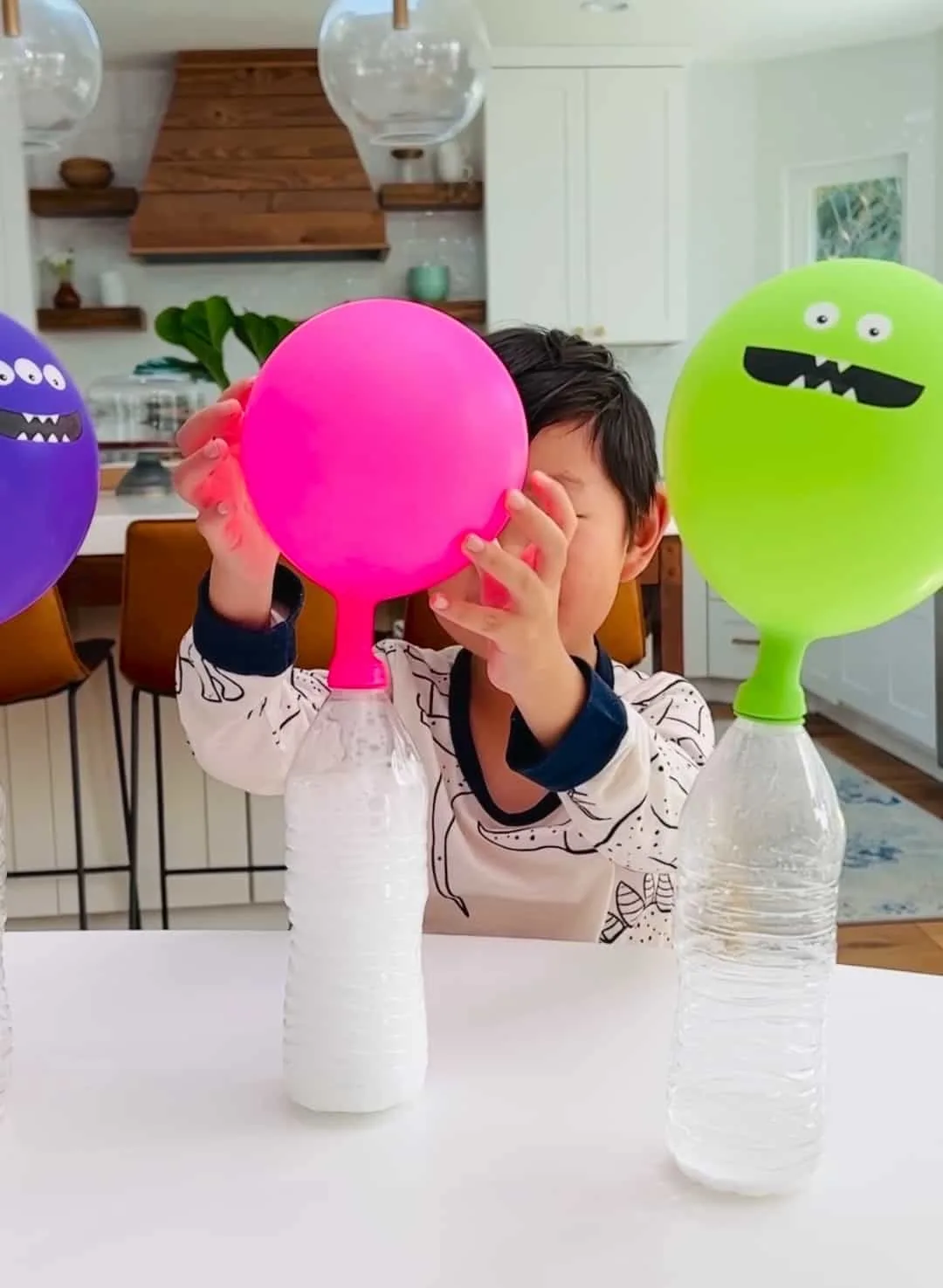
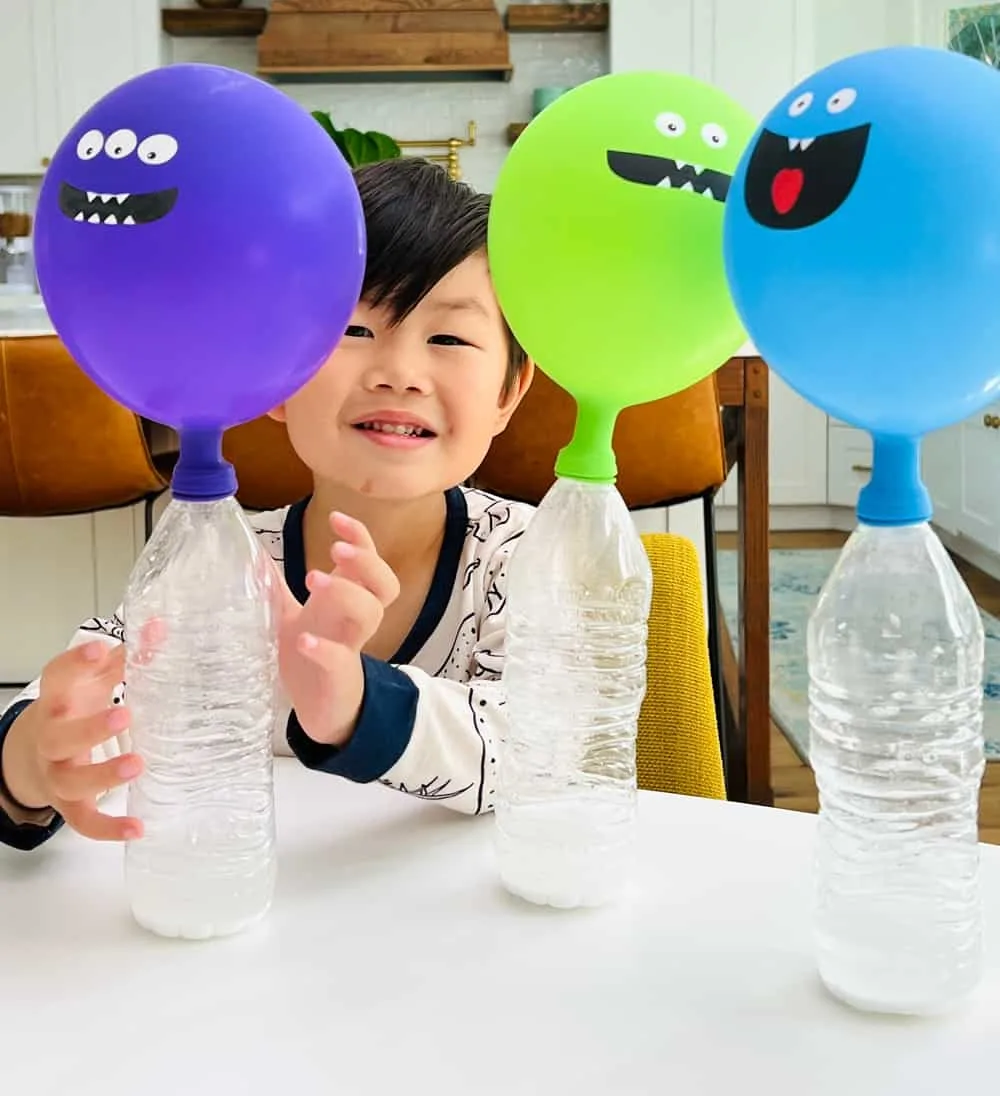
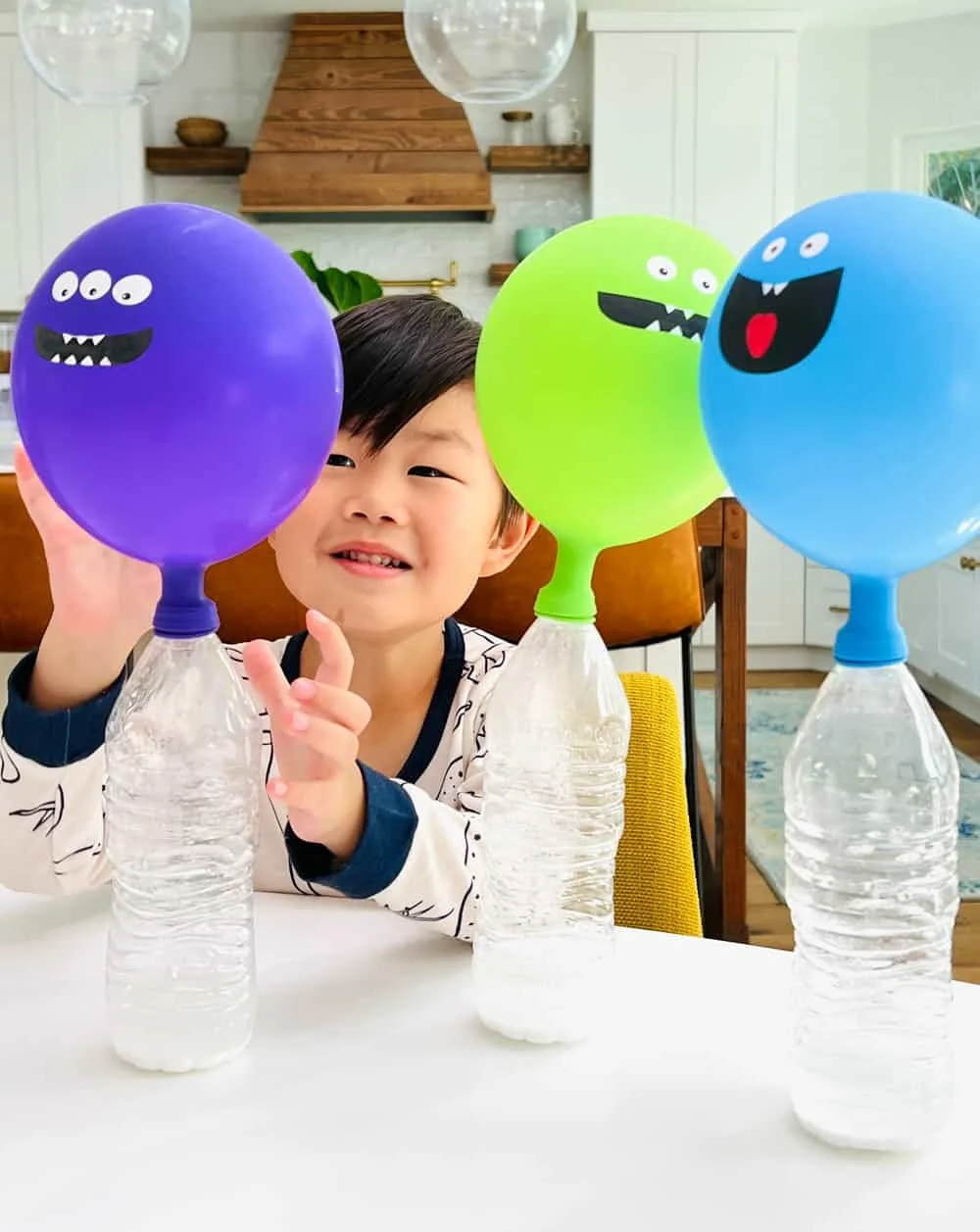
How to Make Your Monster Balloon Even More Terrifying
Use a Black Balloon
Balloons come in all sorts of colors, but for a truly scary effect, you should use a black balloon. This will give your monster a sinister look that will send chills down the spine of anyone.
If you can’t find a black balloon, you can always use a dark colored marker to draw features onto a white balloon. This will give the illusion that the face is floating inside the balloon.
Or, you can try this experiment with a clear balloon and use black construction paper or felt to create a “monster” face; just be careful not to pop it!
Use a Glow in the Dark Balloon
For a truly spooky effect, try using a glow in the dark balloon for your experiment. This will give your balloon an eerie glow that is perfect for any Halloween party.
If you can’t find a glow in the dark balloon, you can always use a regular balloon and add some glow in the dark paint to it. Just be sure to let the paint dry before inflating the balloon.
Orange glow in the dark balloon would be the perfect candidate for a pumkin design.
Decorate it Into a Pumkin
Inspired by the set of pumpkin cups we made a few years ago, pumpkin balloons are the perfect way to add a touch of Halloween to any room or outdoor space.
And, unlike real pumpkins, they last much longer! To make your own pumpkin balloon, simply start with an orange balloon. Then, add some green pipe cleaners (curled) for the stem.
You can also create a “jack-o-lantern” effect by using markers to create pumpkin face details.
Try Using Confetti
You can also try adding Halloween-themed confetti onto it after inflating it. This will give your balloon a fun and playful look that is perfect for any Halloween party. We recommend using clear or transparent balloons for this.
If you can’t find Halloween-themed confetti around the house, you can always use regular confetti. It’s also easy to apply, making it perfect for kids!
This is a great activity to do with kids as they can help you add the confetti shapes. You can also use this opportunity to teach them about the science behind the experiment when doing so.

Takeaway
Have fun this Halloween while learning a little bit of science with this simple experiment! Be sure to watch our video on how to make your monster turn out just right.
Make a variety of monsters if you’re feeling ambitious, then choose your favorite. Use a glow-in-the-dark balloon if you want to make your balloon even scarier.
If you’re feeling particularly festive, consider stuffing the balloon with confetti with a Halloween theme. Have fun and stay safe no matter what you do! Happy spooky season!
Halloween Science: Monster Vinegar Baking Soda Balloon
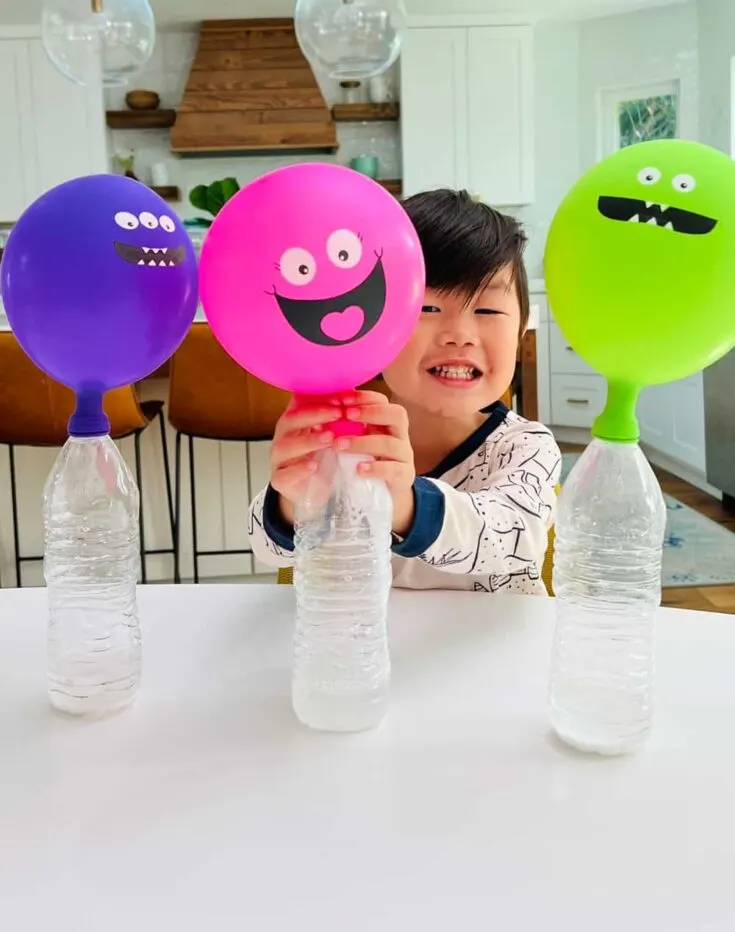
Monster Balloons are a fun Halloween Science Experiment for Kids!
Materials
- Vinegar
- Baking soda
- Funnel
- Empty Clean Water bottle
- Balloon(s) with monster faces
Instructions
Step 1: Pour in Vinegar and Baking Soda
To start, pour 1/4th of a cup of vinegar into a clean 16oz water bottle. Then, place the funnel in the opening of the balloon and add 2 tablespoons of baking soda inside it.
Carefully stretch the opening of the balloon over the neck of the water bottle, being careful not to spill any baking soda inside just yet.
You may want to use disposable gloves to avoid getting the baking soda and vinegar on your hands. This can cause irritation. Gloves can act as a substitute for balloons as well!
Step 2: Combine the Two Ingredients
Lift the balloon so that all of the baking soda falls into the vinegar. Stand back and watch as your balloon inflates and takes on a life of its own!
If using disposable gloves or plain balloons, you can draw additional features onto your "monster" using a permanent marker before adding the baking soda.
Agnes Hsu is a mom of three and has been inspiring parents and kids to get creative with easy activities and family friendly recipes for over 10 years. She shares her love for creative play and kids food to her 2MM+ followers online. Agnes' commitment to playful learning and kindness has not only raised funds for charity but also earned features in prestigious nationwide publications.

